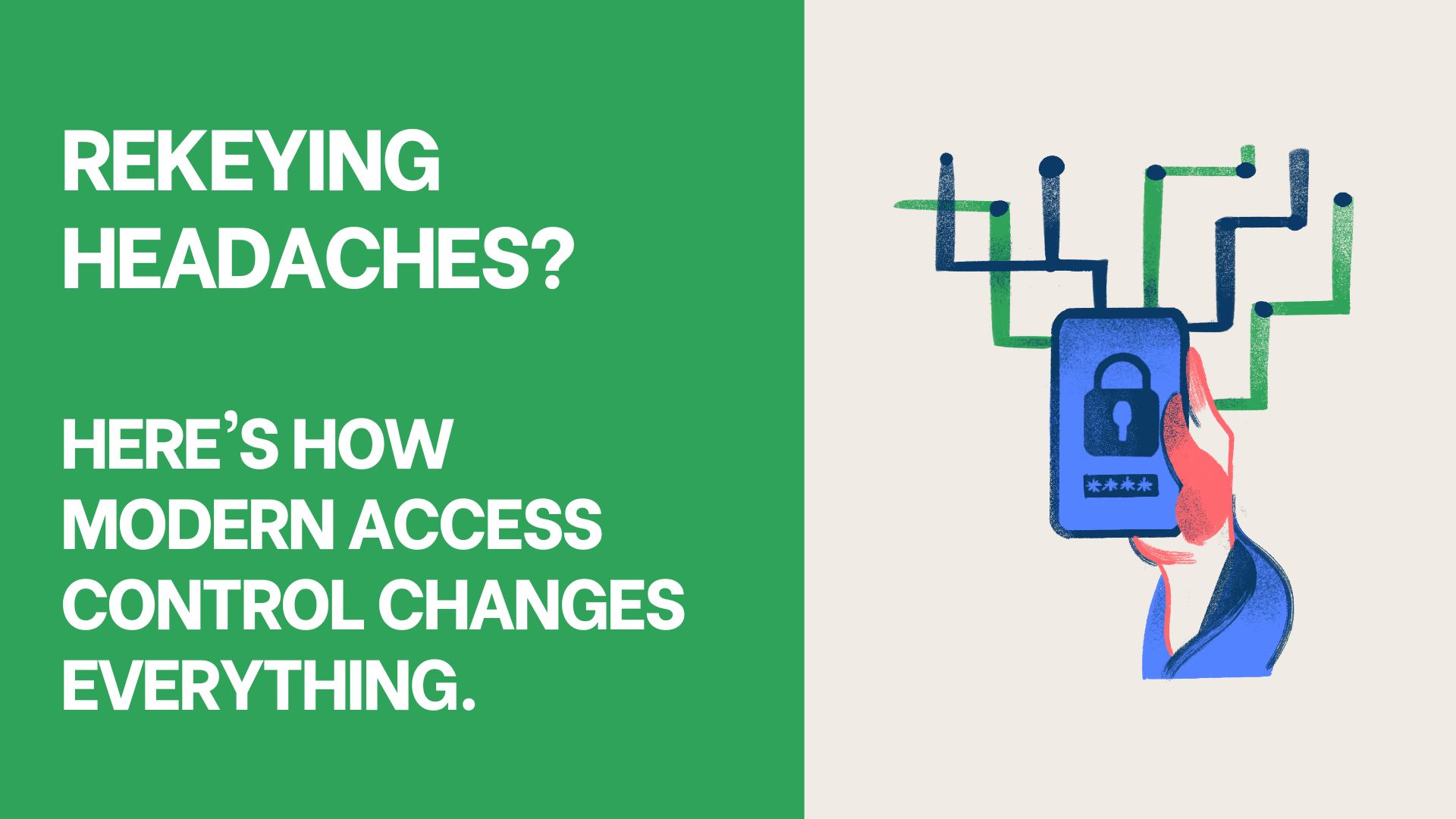
Rekeying Headaches? Here's How Modern Access Control Fixes Everything.
Rekeying Locks Sucks
Every business owner knows the drill. An employee leaves, and a chain of events unfolds – a scramble to collect keys, a rush to the locksmith, and an invoice that makes you wince. This traditional dance of rekeying is not just tedious, but fraught with security risks. But what if there was a smarter, more efficient way?
Understanding Traditional Rekeying
At its core, rekeying is a simple process - changing the internal mechanisms of a lock so the old key no longer works. But the ramifications of delaying this procedure, especially in a business setting, can be far-reaching. Remember that local office theft that happened suspiciously close to when an employee left? Could an overdue rekeying have been the oversight that cost them?
The Hidden Costs of Rekeying
It's not just the locksmith’s bill. Think about the man-hours, the administrative tasks, the security risk during that gap, and even the intangible cost of peace of mind. Every delay amplifies these concerns.
The Band-Aid Solutions:
-
Key Fobs: They seemed like the future. Until they're lost, and you realize they’re just a high-tech version of the same problem.
-
Server-Based Access Control: It promises a seamless experience but comes with its own challenges, from server downtimes to maintenance woes. Or what if your ex-employee happened to get his hands on an extra fob you weren't aware of? Key management becomes a huge grievance for many business owners.
-
Pin Pads: Convenient, yes, but in a world where password sharing is commonplace, how secure is it really?
-
WiFi or Smart Locks: Internet-dependent, they're not the security grail one might hope for.
Mobile Credentials: The Game Changer: Here’s where the paradigm shifts. Cloud-based access control with mobile credentials makes granting or revoking access a task of mere seconds. Consider the experience of BDS, an Alberta-based trucking firm. In a dynamic environment with drivers needing spontaneous access, the cloud solution proved invaluable. It also laid the foundation for advanced features, like door schedules aligned with office hours.
How Modern Access Control Stands Out:
-
Immediate Implementation: No waiting period. No security gaps. Issue or revoke access instantly.
-
Cost-Effective: Consider the cumulative costs of traditional systems: locksmiths, new keys, fobs, and the administrative burden. Modern solutions offer more features at a fraction of the cost over time.
-
Enhanced Security: Advanced encryption, real-time monitoring, and immediate access modification significantly boost security levels.
-
Flexibility: Customize access down to the minutiae. Time-based access, location-specific privileges, and more.

Overcoming The Resistance to Change
Change, even when it's for the better, can be daunting. Traditional methods, despite their flaws, offer familiarity. But the rapid pace of technological advancement waits for no one. Those who adapt thrive, while others play catch-up. BDS’s success story is a testament to the potential gains.
An Eye to The Future
As the world goes digital, our security solutions should echo this progress. Beyond just digital credentials, the potential for integration – with surveillance systems, alarms, and even HR software – paints a promising picture.
Conclusion
Rekeying may have been a mainstay for years, but the future beckons with solutions that are not only more efficient but also significantly more secure. Modern access control systems aren't just an upgrade; they're a transformation.
Ready to make the switch and propel your business into the future of security? book a demo and see how we can tailor a solution to your unique needs.

